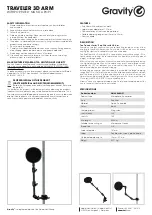
Chapter 7 Configuration and Setup
7-14
The reference wavelength is chosen based on the analytical wavelength and must be
chosen at a wavelength where other gases do not absorb IR energy. The default
wavelength of 4.004 microns should be used if the presence of other gases is not certain.
Once the analyzer has measured the signal at the reference wavelength, the value is
applied to the analytical wavelength and a correction in its value is made. The process of
switching between the analytical wavelength and reference wavelength is continuously
repeated.
Use of the reference wavelength compensation can greatly improve the stability of the
SapphIRe analyzer in long term and short term monitoring applications. Choosing
reference wavelength compensation slows down the cycle time of the analyzer.
Figure 7-1 shows that reference compensation greatly improves the ability of the analyzer
to remain stable over extended periods of time. It is still important, however, to let the
instrument warm up for at least 10 minutes prior to beginning an analysis.
The information in Figure 7-1 was generated by enabling a reference compensation at the
default wavelength setting of 4.004 microns. The data was logged at one minute intervals
in the continuous mode. For graphing purposes, the text data was converted into an
Excel spread sheet using the Data Parse option.
Figure 7-1. Effect of Reference Compensation
Humidity Compensation
Changes in ambient humidity can significantly affect the accuracy of the gas
concentration. When humidity levels change from the zero time, the gas concentration
can either rise or fall as those ambient levels rise and fall, respectively. For example, if
the analyzer is zeroed in a 30% RH area and then taken to an 80% RH area, the reading
for the gas will most likely rise. The level of fluctuation is gas and wavelength
dependent. Optimal compensation is accomplished if the change in relative humidity is
20%. If there is a larger change, rezeroing the instrument is recommended. To
Содержание MIRAN 205B Series
Страница 4: ......
Страница 14: ......
Страница 40: ......
Страница 54: ......
Страница 96: ......
Страница 102: ......
Страница 108: ......
Страница 112: ......
Страница 118: ......
Страница 122: ...Chapter 13 Infrared Spectroscopy Tutorial 13 2 Figure 13 1 Electromagnetic Spectrum ...
Страница 142: ......
Страница 170: ......
Страница 196: ......
Страница 202: ......
Страница 210: ......
















































